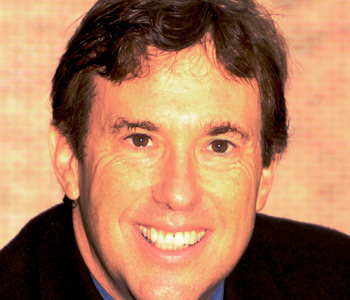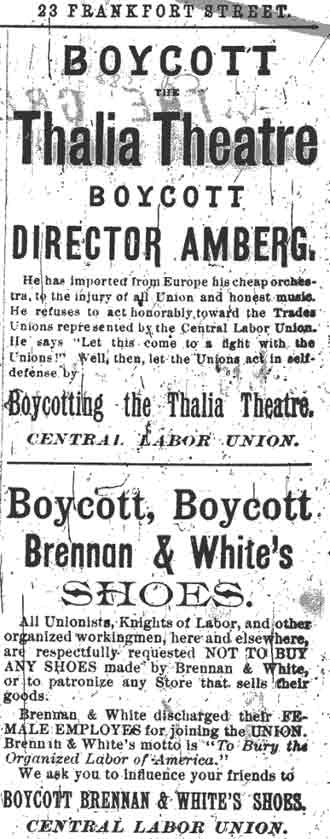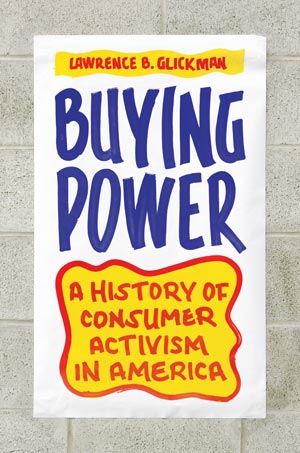
Buying Power traces the origins and development of consumer activism in America from the 1760s to the present. Historians and other scholars have written about discrete boycotts or closely conjoined sets of boycotts (such as those of the 1760s and 1770s). My book, by contrast, treats consumer activism as a continuous and significant American political tradition.
To say that boycotts constitute a political tradition is not to claim that that tradition was monolithic. From the beginning, boycotts were deployed by groups with very different political agendas. Two chapters early in my book, for example, contrast antebellum America’s abolitionist boycotters of slave-made goods and white Southern proponents of “non intercourse” with the North. These groups employed nearly-identical tactics to promote antithetical goals, putting their shared belief in the power of organized consumption to work for opposing causes.
One advantage of studying consumer activism from a long-term perspective, then, is that this vantage reveals that recent conservative boycotts (such as the Southern Baptist boycott of the Disney corporation) are not departures from a monolithic “progressive” tradition.
Another advantage of studying consumer activism from a long-term perspective is that it makes salient both the continuities and transformations within this more than two-century tradition, setting into relief aspects of consumer politics that developed and changed over time.
It was not until the twentieth century that consumer politics came to be characterized by a conception of “the consumer” as needing protection. Moreover, it was in this period that there emerged self-described consumer organizations, groups that saw their task as representing, defending and lobbying for consumers themselves. These groups established consumers as one interest group among many in a pluralistic society—rather than as an embodiment of that society, as consumers had been thought of by most nineteenth century consumer activists.
These groups coalesced in the 1930s into something known as the “consumer movement,” an organized political effort on behalf of consumers, whose chief aim was, as Helen Sorenson described it in her 1941 book, The Consumer Movement, “protecting and promoting the consumer interest.” The federal government itself came to understand the protection of the consumer interest as one of its duties, starting with the Pure Food and Drugs Act of 1906, through the various consumer advisory boards of the New Deal, and through the President’s Special Assistant for Consumer Affairs, begun under President Lyndon Johnson in the 1960s.
What distinguished the “consumer movement” from previous and contemporaneous movements of consumers was precisely this emphasis on consumers themselves as the chief beneficiaries of political activism. By contrast, neither Revolutionary boycotters, “free produce” campaigners, nor even the turn-of-the-twentieth-century founders of the National Consumers’ League saw themselves as part of a “consumer movement.” Rather, these groups mobilized consumers not for the benefit of consumers but on behalf of the nation, the slave, the worker, or the poor.
“Consumer activists proclaimed the ‘death of moral distance’ long before recent debates about the need to ‘think globally.’”
Long distance solidarity is perhaps the key concept I explore in this book. Consumer activists were among the first Americans to declare that moral agency should not be dictated by geography. They did so not for abstract reasons (about human brotherhood, for example) or because they necessarily held that every person on earth was equally worthy. The claim for the importance of long distance solidarity was far more concrete. Consumer activists argued that consumers’ actions had a direct impact on the people who made and sold the goods they bought. Consumers in the aggregate held tremendous power over these people and thus had a concomitant responsibility to exercise this power in an ethical fashion.
In making this claim about consumer power and responsibility, consumer activists consistently challenged contemporary standards of moral responsibility: not, as did most critics, because those standards set the bar too high, but because they set it too low.
Humanitarianism in the late-eighteenth and nineteenth centuries and philanthropy in the twentieth and twenty-first have urged individuals to feel sympathy for, and to alleviate the suffering of, others, typically through charitable donations. But they have not held the individuals whose donations and support they seek responsible for that suffering. By contrast, consumer activists, from the late eighteenth century onward, posited a networked world (hence their favored metaphors of the web and the chain), in which there existed no guilt-free observers. If humanitarians and philanthropists urged Good Samaritans to step in after the suffering for which they bore no responsibility, consumer activists held shoppers liable for the suffering.
Consumer choices, in their view, were inevitably moral choices as well. Consumer activists proclaimed the “death of moral distance,” long before recent debates about the need to “think globally.” No matter how far away physically, victims of deleterious consuming practices were not unrelated to consumers in a moral sense. Consumer activists, in effect, proposed a new physics of time and space, highlighting the real-time effects of consumption and suggesting that in an increasingly networked economy, the moral impact of one’s actions was not determined by physical propinquity but by the market-based effects of one’s economic actions.
Beginning in the late eighteenth century, the logic of consumer activism held that consumption might and probably did influence the morality of one’s relationships with the distant and unknown workers who produced the goods one bought—as well as with their employers, environment, and countries.
This morning, October 1, 2009, I picked up the New York Times to notice a full-page ad on the back of the news section. It was prepared and paid for by “The Center for Consumer Freedom.” The group, going by the motto of “Promoting Personal Freedom and Protecting Consumer Choice,” opposes taxes being considered by New York City and elsewhere on soda and junk foods. The ad begins, “Are you too stupid…to make good personal decisions about foods and beverages.” Arguing against the “campaign to demonize soda” the advertisement blasts “food cops and politicians” for “attacking food and soda choices they don’t like.” Another of their ads warns about “Big Brother” in the “Big Apple.” The group’s print ads provide a present-day example of the language of what I call “conservative populism,” whose origins I trace in my book.
The final chapter of Buying Power examines the battle for, and ultimate defeat of, a Consumer Protection Agency (CPA), a cabinet-level department, which came tantalizingly close to becoming a reality several times in the 1970s. The CPA was defeated by a powerful lobby of various business organizations, led by the U.S. Chamber of Commerce. But, in the end, the bill was, as the Wall Street Journal observed in 1978, “killed by words,” that is by the language of conservative populism that was invented by opponents of consumer protection and still lives on.
Beginning in the 1960s, this lobby successfully popularized the idea that consumer protection was a form of government coercion sufficiently frightening that it was best understood as “Orwellian.” This, I argue, was the opening wedge in what became a rhetoric of describing the broader liberal project as one that promoted unfreedom.
The specifics have changed in the last forty years, but the fundamental accusation has not. Currently, the same criticism is being used against President Obama’s proposed Consumer Financial Protection Agency. (I outline the argument that consumer protection is an important element of modern liberalism in a brief piece titled Consumer Protection Redux.)
“The core principles of boycotting–such as the use of the modern sounding phrase ‘conscientious consumer’ and the concept of long distance solidarity—were firmly in place by 1880, the year that the word ‘boycott’ was coined.”
In the late 1990s, I began to research a book on consumer activism in the twentieth century. Several years into my research, I realized that I could not tell this story without showing what had come before. Consumer activism in the years before 1900 turned out not to be merely prehistory to the “real” story of consumer activism but an essential part of it.
Although historians, especially T. H. Breen, had highlighted the importance of Revolutionary era consumer politics, very little work had been done on the nineteenth century. For this reason, I most enjoyed researching the chapters of Buying Power that cover relatively unknown consumer campaigns—including those by abolitionists and Southern nationalists in the antebellum era, and by labor and African American activists in the postwar years. These campaigns, I believe, helped invent the vocabulary and the underlying philosophy that continue to guide contemporary boycotters. The core principles of boycotting–such as the use of the modern sounding phrase “conscientious consumer” and the concept of long distance solidarity—were firmly in place by 1880, the year that the word “boycott” was coined.
Despite the importance of this nearly continuous history, one of the most striking characteristics of consumer activism is the lack of knowledge that boycotters generally have had about their predecessors. I tried to understand why, compared with most other social movements, boycotters have tended so quickly to forget their history. At the same time, although they may not have been able to name their forebears, boycotters have almost always drawn on the methods and philosophies of those who came before them. I’m conflicted about whether this process of forgetting is part of what has accounted for the prevalence of boycotting. Since most boycotts throughout U.S. history have failed to achieve their goals, perhaps those who remembered the past would have been disinclined to try a seemingly ineffective tactic.
Writing this book made me acutely aware not only of the genealogies of consumer activism and its rhetorics (both for and against) that continue to inform the consuming practices of the present but also of the artificial nature of our theoretical approaches, especially to the standard periodization of U. S. history that takes the Civil War to be the defining divide.
Defying the conventions of academic departments, the history of consumer activism was neither strictly antebellum nor postbellum; it was both. I would like to see more work that traces concepts and practices over the course of our history. Such works can shed new light both on the concept being traced, and can also, as I believe Buying Power does, provide a way to reframe U. S. history more generally.



Lawrence B. Glickman is professor of history at the University of South Carolina, where he has taught since 1992. His other books include, A Living Wage: Americans Workers and the Making of Consumer Society (1997); Consumer Society in American History: A Reader (1999); and, co-edited with James W. Cook and Michael O’Malley, The Cultural Turn in U.S. History: Past, Present, and Future (2008). He has received fellowships from the National Endowment for the Humanities, the American Philosophical Society, and Princeton University’s Center for Human Values. He has published in the Journal of American History, the American Quarterly, the Journal of Social History, the Boston Globe, the New York Times, the Washington Post, The Nation, and the Huffington Post.